Abstract
Among root vegetables in Japanese agriculture, summer radish is one of the important crops. The national harvest volume for 2022 will reach 204kt, and the cultivated area is also the largest in the country, covering 5.29kha. Hokkaido in particular has the largest shipping volume in the country, at 91.4kt. These figures show that summer radishes are widely produced throughout Japan, with Hokkaido being the main production area. This suggests that Hokkaido’s climatic conditions and soil characteristics are suitable for cultivation. It also appears that there is a high demand for summer radishes, demonstrating their important position in the agricultural economy. Due to increasing demand and advances in production technology, the production and shipping volumes of summer radishes are likely to continue to increase.
Summer radish harvest yield (main data).
Japan’s summer radish harvest has fluctuated between 1973 and 2022. In 1986, the national harvest peaked at 343kt. However, harvest volumes have fluctuated from year to year since then, and as of 2022, they have fallen to 59.5% of their peak. Possible reasons for this decline include technological innovations in agriculture, changes in market demand, and the impact of climatic conditions. Increased demand for other agricultural products and domestic and international competition may also be affecting summer radish yields. This trend indicates that summer radish production is declining compared to past peaks, but future demand or changes in agricultural policies may lead to yields increasing again.
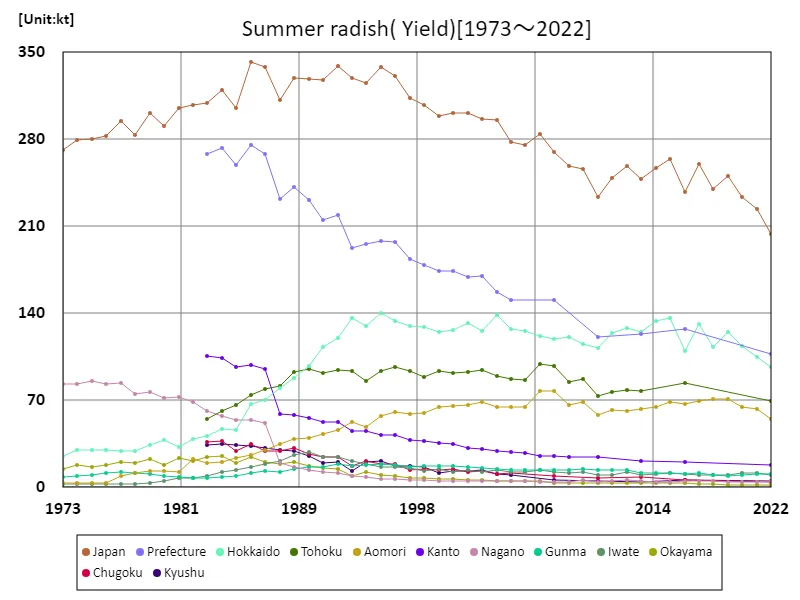

The maximum is 343kt[1986] of Japan, and the current value is about 59.5%
Summer daikon harvest volume (by prefecture).
According to data for 2022, the highest root vegetable harvest in Japanese agriculture was in Hokkaido, at 96.4kt. Hokkaido recorded the largest yield, clearly indicating that this region is a major producer of root vegetables. Hokkaido’s vast farmland and unique climatic conditions are ideal for cultivation, resulting in high yields. On the other hand, in other regions, yields are relatively low, but because each region has different climate and soil conditions, each region is able to grow the crop in an optimal way. Additionally, harvest yields in each region fluctuate from year to year due to changes in demand and advances in agricultural technology. Considering past trends, some regions, including Hokkaido, are major root vegetable producing areas, and harvest volumes are expected to continue to increase due to growing demand and technological innovation.
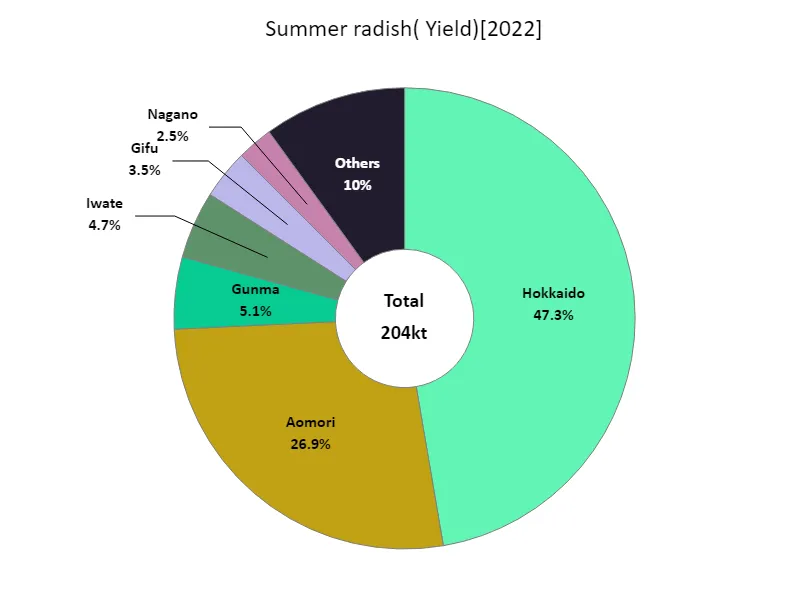

The maximum is 96.4kt of Hokkaido, the average is 4.43kt, and the total is 204kt
Area planted with summer radish (main data).
The area of land cultivated with summer radish in Japanese agriculture has fluctuated between 1973 and 2022. The highest cultivated area was recorded in 1987 nationwide at 11.9kha, but the cultivated area has decreased year by year since then and is currently at 44.5% of the peak. Possible reasons for this decline include structural changes in agriculture, changes in demand, and the effects of climatic conditions. The modernization of agriculture and urbanization have led to a decrease in farmland and changes in production structure, which are likely to have affected the area planted with summer radishes. Diversification of demand and competition with other crops may also have contributed to the decline in planted area. This trend shows that the area planted with summer radishes is on the decline, but depending on region and changes in demand, the area planted may increase. It will be necessary to continue to monitor the trends in the area planted with summer radishes, paying close attention to changes in agricultural policies and market conditions.
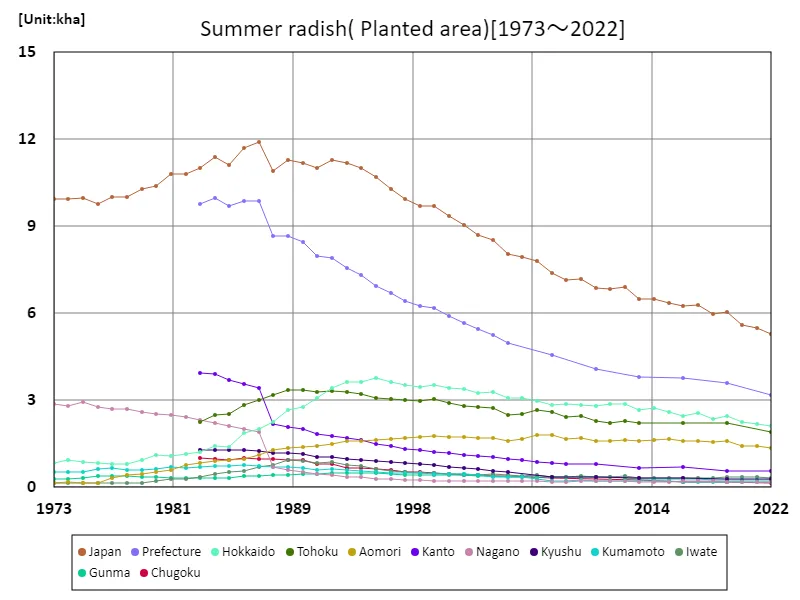

The maximum is 11.9kha[1987] of Japan, and the current value is about 44.5%
Area cultivated with summer radish (by prefecture).
According to data from 2022, the largest area of land planted to root vegetables in Japanese agriculture is 2.1kha in Hokkaido, which is the current maximum value. Hokkaido recorded the largest planted area, indicating that the region is a major producer of root vegetables. The reason behind this is that Hokkaido’s vast farmland and suitable climatic conditions are ideal for cultivating root vegetables. On the other hand, the cultivated area in other regions is relatively small, but this is likely due to differences in geographical conditions and demand from region to region. Changes in agricultural policies and market demand also affect the area planted to root crops in each region. Based on past trends, some regions, including Hokkaido, are major root vegetable producing areas, and the area planted to root vegetables is likely to expand in the future due to increasing demand and technological advances.
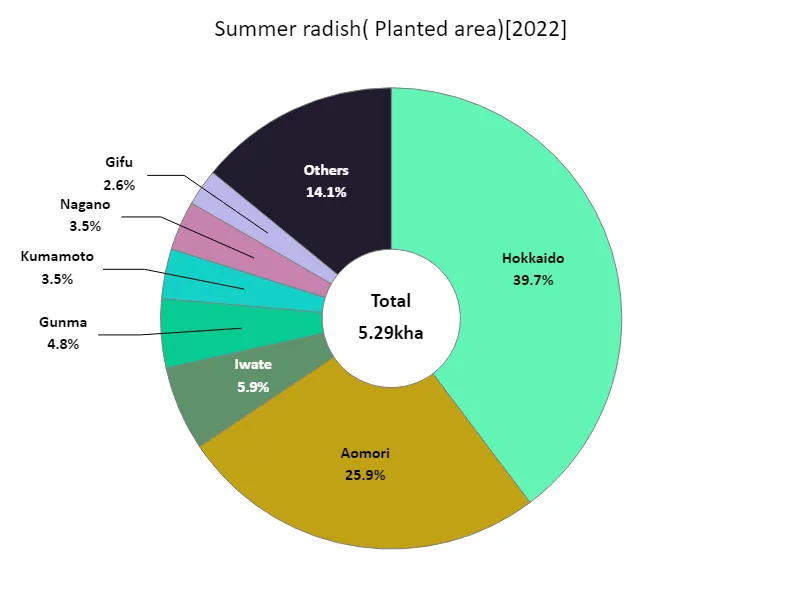

The maximum is 2.1kha of Hokkaido, the average is 115ha, and the total is 5.29kha
Summer radish shipping volume.
According to data for 2022, the largest volume of summer radish shipped in Japanese agriculture was Hokkaido at 91.4kt, with the average shipping volume being 4.07kt. Total shipments reached 187kt. Hokkaido recorded the largest shipping volume, indicating that this region is the main producer of summer daikon. Hokkaido’s suitable climate conditions and advanced agricultural technology have enabled high shipping volumes. On the other hand, shipments in other regions are relatively low, but there are differences in demand and production volumes from region to region. Shipping volumes of agricultural products are seasonal, and summer daikon radishes are no exception. Production is being adjusted to meet peaks in demand, which is also affecting shipping volumes. Additionally, agricultural product shipment volumes are also affected by fluctuations in market demand and prices. Based on past trends, certain regions, including Hokkaido, are major producers of summer radishes, and shipping volumes may fluctuate in the future due to increasing demand and technological advances.
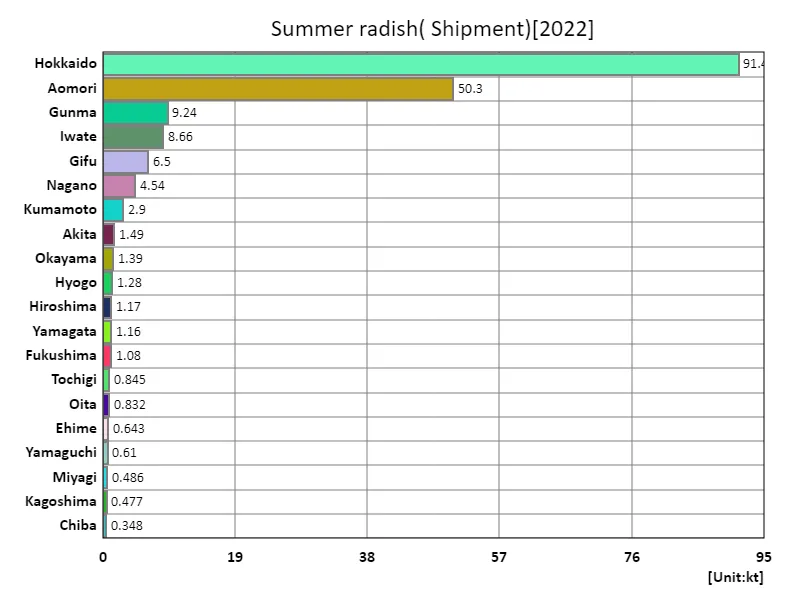

The maximum is 91.4kt of Hokkaido, the average is 4.07kt, and the total is 187kt
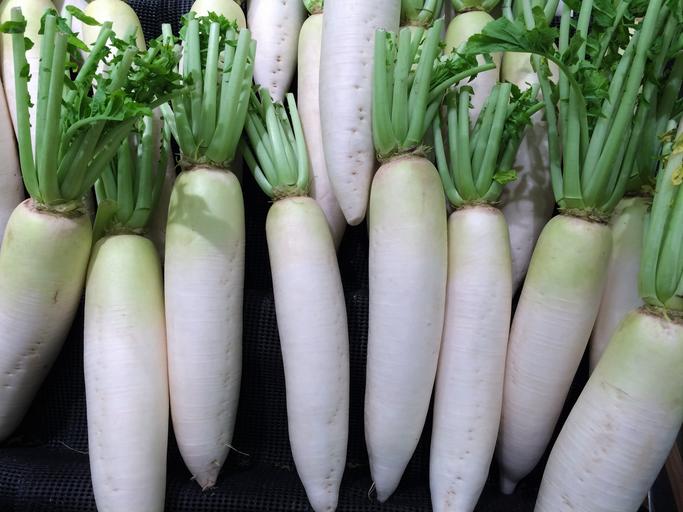


Comments